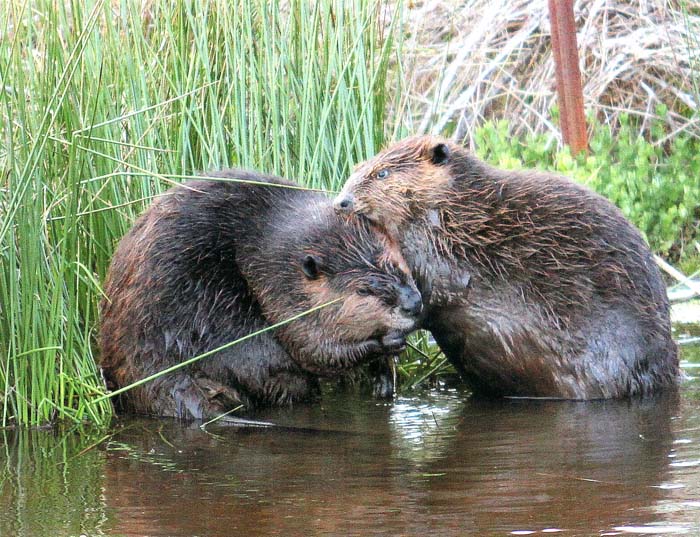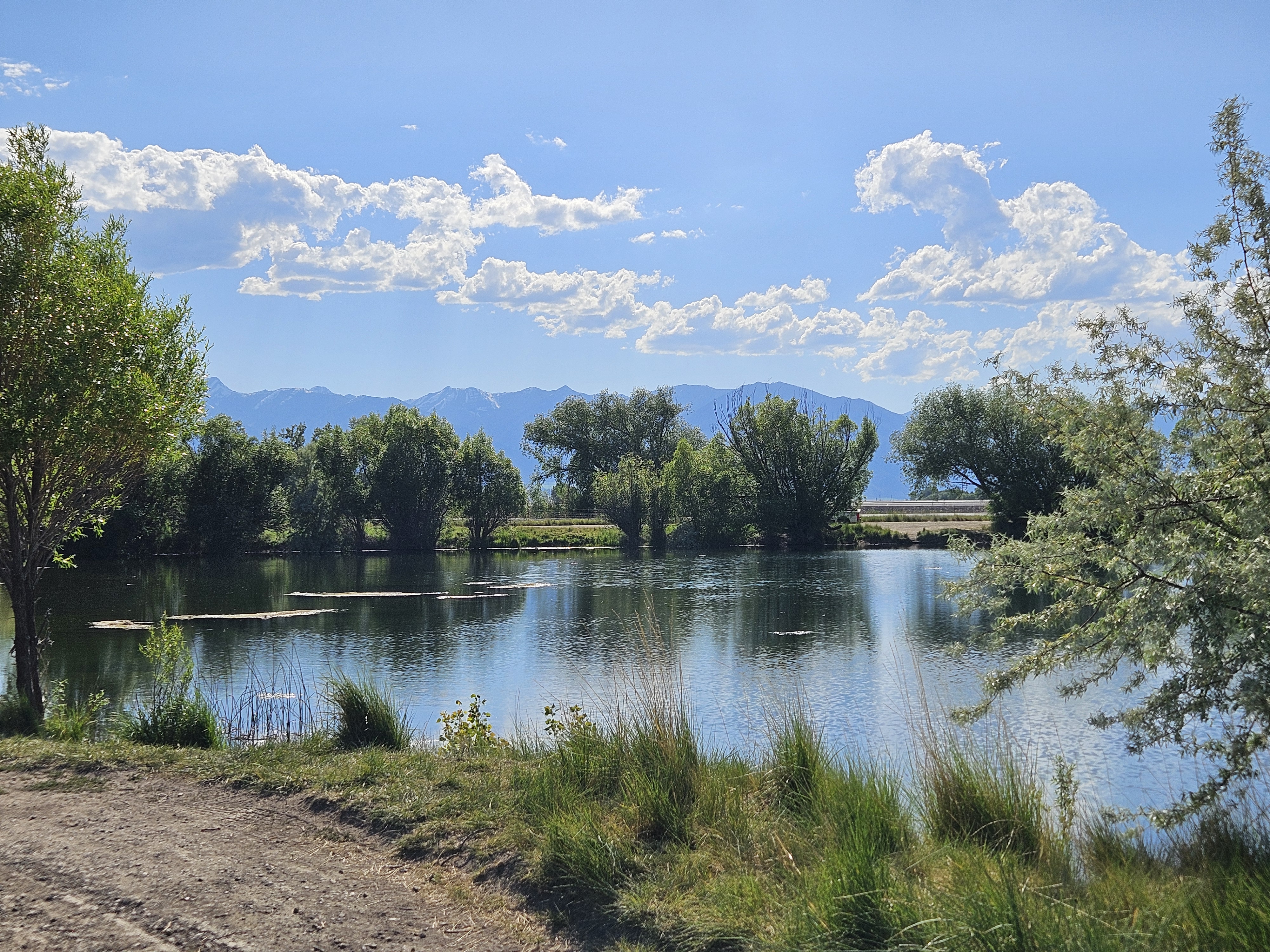Baker City beaver advocate calls partial ban on trapping ‘a really important first step’
Published 7:08 am Tuesday, June 24, 2025

- Small and medium-sized dams built by beavers can play a valuable role in restoring and enhancing watersheds, something that is becoming more critical than ever in this age of climate change.
Suzanne Fouty of Baker City has been advocating for boosting Oregon’s beaver population for years, and she’s pleased that state lawmakers have passed a bill designed to do that.
But Fouty, a retired hydrologist and soil specialist who worked for the U.S. Forest Service, said House Bill 3932, has significant flaws.
“This bill is a big deal,” Fouty said on Monday, June 23. “It’s a really important first step. But we should not see this as the end.”
Fouty is among the scientists who signed a 2024 letter urging the Oregon Fish and Wildlife Commission to prohibit recreational and commercial beaver trapping on all federal land in Oregon, except tribal lands.
That would include about 53% of the state’s land and much of its prime beaver habitat.
Fouty said House Bill 3932 falls short of the goals that she and her co-signers have.
The legislation, rather than covering all federal lands, bans beaver trapping on federal or state lands (excluding tribal land) along streams that have been designated as “impaired” by the Oregon Department of Environmental Quality.
That list includes many rivers in Northeastern Oregon, including the Powder, Burnt, Grande Ronde and Umatilla, as well as more than two dozen smaller streams.
For larger streams such as the Powder and Burnt rivers, the trapping ban is within 200 feet of the water. For smaller tributaries, there is no such buffer, and trapping is prohibited throughout the tributary’s subwatershed, Fouty said.
Fouty’s concern stems not from land the legislation covers, but from what it does not.
She said only about 46% of the state’s streams have been surveyed for the pollutants that can lead to their being designated as impaired.
That leaves many thousands of miles of streams, and tens of thousands of acres, left out of the bill’s protections and thus deprived of the potential benefits of beavers, Fouty said.
The biggest gap, she believes, is in the southeastern part of the state, including its two largest counties, Malheur and Harney, as well as the Klamath Basin, where frequent water shortages have led to conflicts between farmers and conservationists.
Due to the relative lack of water quality data from those areas, many streams aren’t designated as impaired even though, Fouty said, they likely suffer from the same issues as rivers that the state has branded as impaired.
The new law, limited to subwatersheds with officially impaired streams and to within 200 feet of larger (5th order or greater) streams listed as impaired, will create a “patchwork of protection,” Fouty said.
The law does not affect private property.
The most common reasons for a waterway to be deemed impaired are that its water is sometimes warmer than ideal for fish such as trout, steelhead and salmon, contains levels of dissolved oxygen that can harm fish, or is polluted by sediment or bacteria, or both.
Beavers — and specifically the dams they build — can help alleviate all those problems and confer other benefits besides, Fouty said.
Beaver dams create pools that can trap sediment and other pollutants, she said.
The pools also help cool water and raise the water table, expanding wetlands that are important habitat for other wildlife.
Fouty said she has measured water temperatures in Trout Creek, a tributary of the North Fork Burnt River near Whitney. There are a series of beaver dams on a reach of Trout Creek, and Fouty said water behind those dams was 4 to 5 degrees lower than in sections of the creek just 500 feet or so away.
Fouty said beavers can also help farmers and ranchers by capturing water and spreading it over a larger area, even during droughts.
Wetlands created by beaver dams also can serve as refuges for livestock and wild animals during wildfires, she said.
Trapping has declined over past 25 years
According to state statistics, trappers took 1,495 beavers in Oregon during the 2023-24 season, which runs from Nov. 15 through March 15. About 53% were trapped on private land, which isn’t affected by the new law.
In 2013-14, trappers took 3,257 beavers, and agents from the U.S. Wildlife Services, a federal agency, killed another 474.
Starting that year, a change in Oregon law allowed people to trap or shoot beavers on private land without a permit.
They also weren’t required to file a report, and in the ensuing decade the official tally of beavers trapped has dropped to a yearly average of about 1,275 — 39% of the 2013-14 total.
Fouty said the totals from the past decade understate the actual number of beavers taken.
Regardless, she said she and other beaver supporters have found ample habitat that beavers could colonize.
That fewer than half of the beavers trapped last year were taken on public land reflects the animals’ relatively scarcity in those areas, Fouty said.
But even relatively light pressure from trappers can prevent beavers from growing in numbers and expanding their range, she said.
She said it’s uncertain how quickly, and where, beaver populations will grow once the partial ban on trapping takes effect.
Fouty said transplanting beavers to unoccupied habitat would be helpful.
Opposition to new law
The legislature received more than 1,600 comments regarding House Bill 3932, many from people or organizations supporting the legislation.
But there were also numerous opponents.
Edward Minalia of Flora wrote in a letter to the legislature that he is an “experienced trapper.” He wrote that the bill’s restrictions on trapping “would put many out of work, jeopardizing livelihoods and local economies that depend on trapping-related activities.”
Minalia wrote that beavers, if their populations are allowed to grow “unchecked,” can “cause extensive damage to agricultural lands, disrupt infrastructure, and threaten the habitats of other wildlife.”
Trapping, Minalia wrote, is a “vital tool that ensures our environments remain balanced and healthy.”
Several members of the Oregon Trappers Association also submitted written comments opposing the bill.
Fouty points out that the bill doesn’t supersede current laws that allow beavers to be trapped or shot if they damage irrigation canals or other structures, but she said use of “non-lethal coexistence strategies” are preferred as they are more effective and cheaper over the long term in many places.
“And we are lucky in Baker County as the Powder Basin Watershed Council has a staff person trained to help landowners put these coexistence strategies into place,” she said. “This is a chance to let folks in Baker County know that strategies exist.”
State Rep. Mark Owens, R-Crane, whose district includes Baker County and a member of the House Committee On Climate, Energy, and Environment, voted no on a motion to move the bill to the full House. Owens was not present when the House approved the legislation, 35-18, on April 21.
State Sen. Mike McLane, R-Prineville, voted no when the Senate passed the bill 17-11 on June 16.





